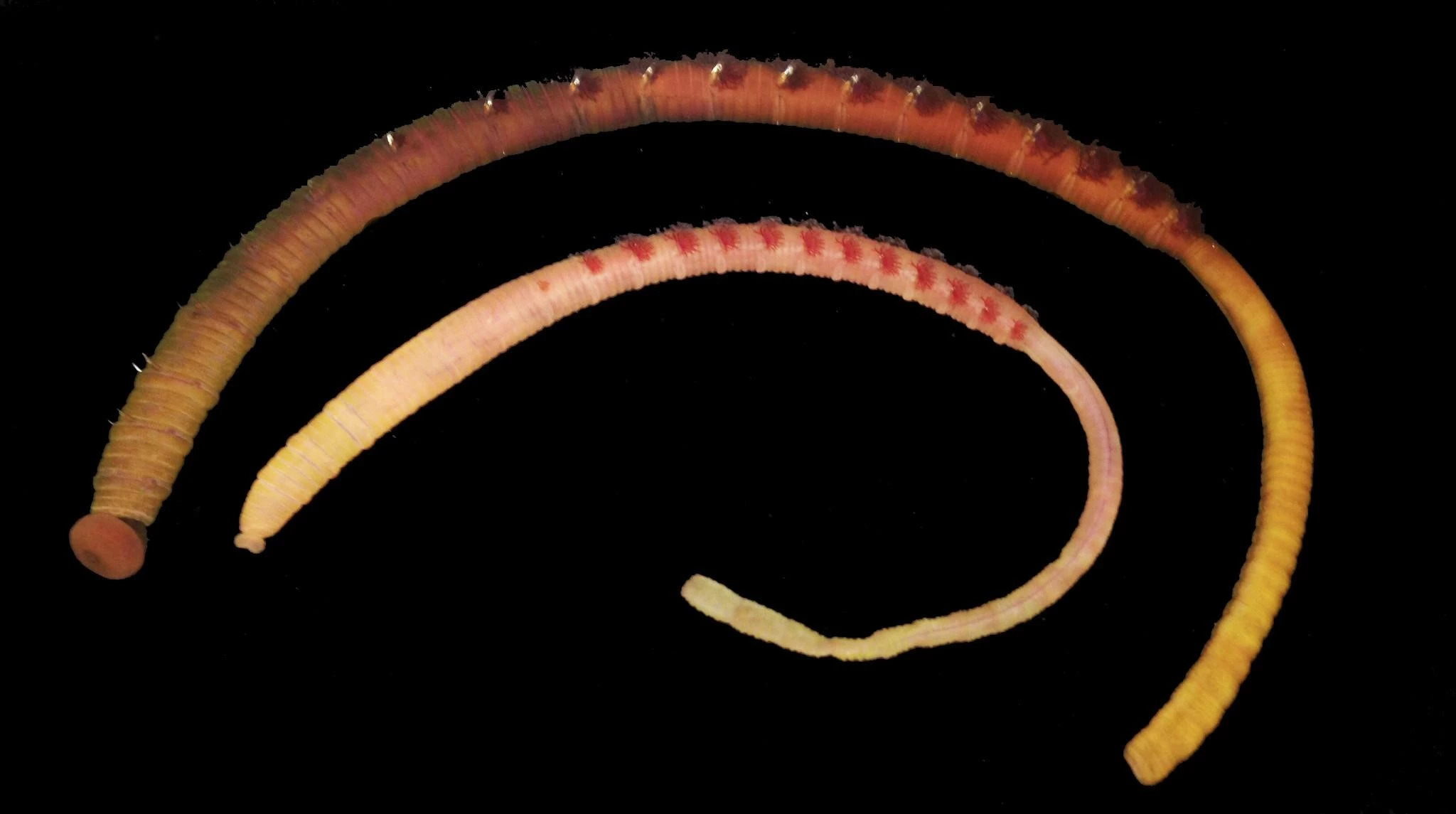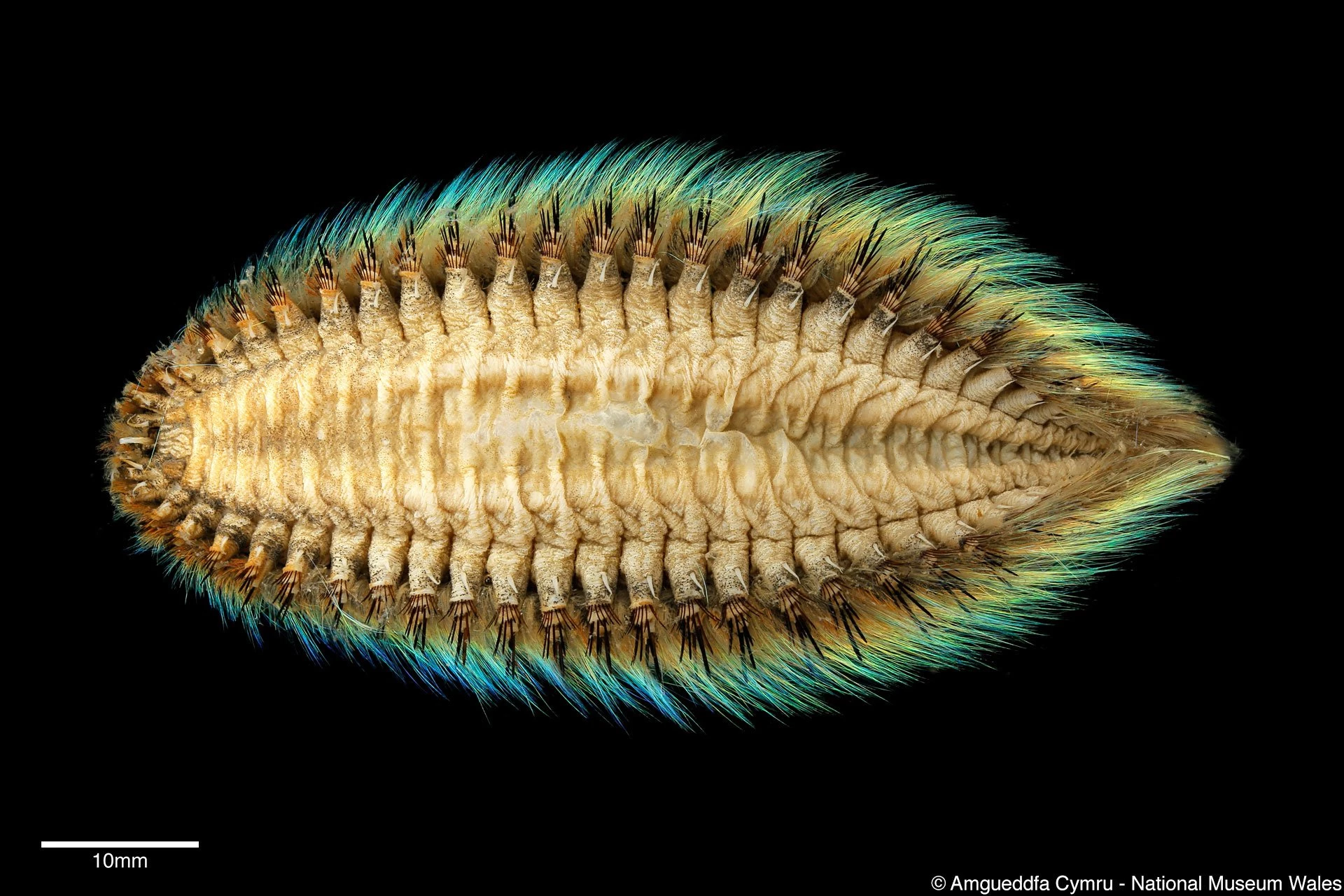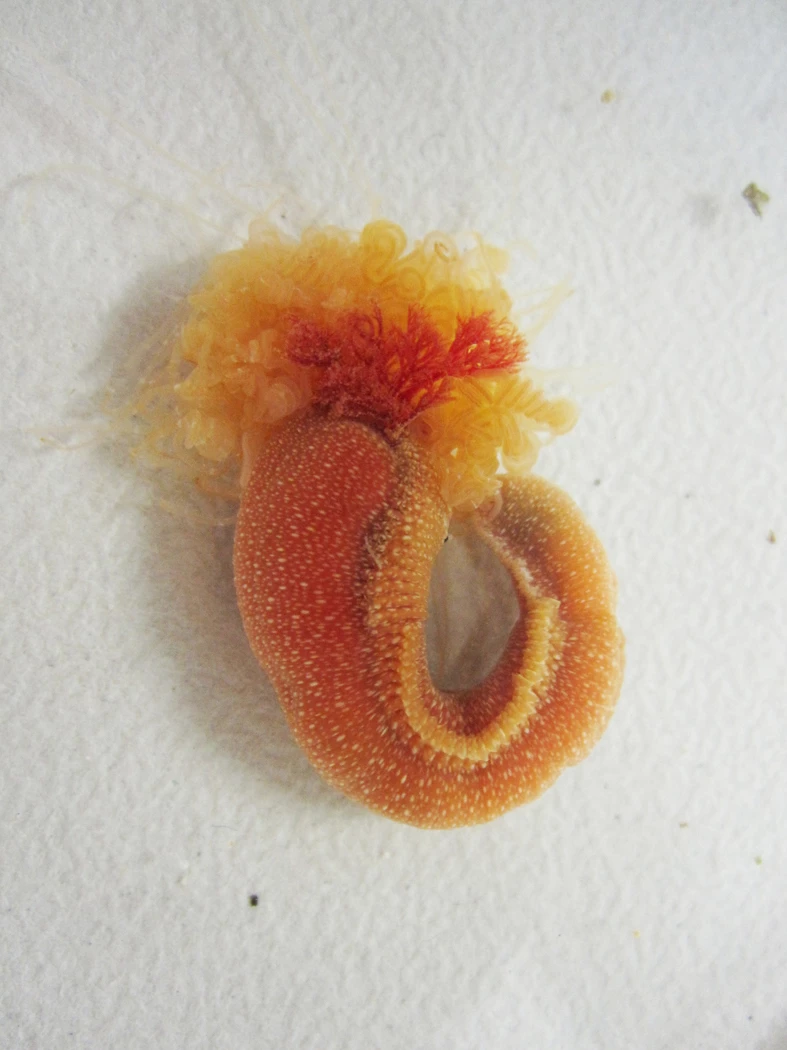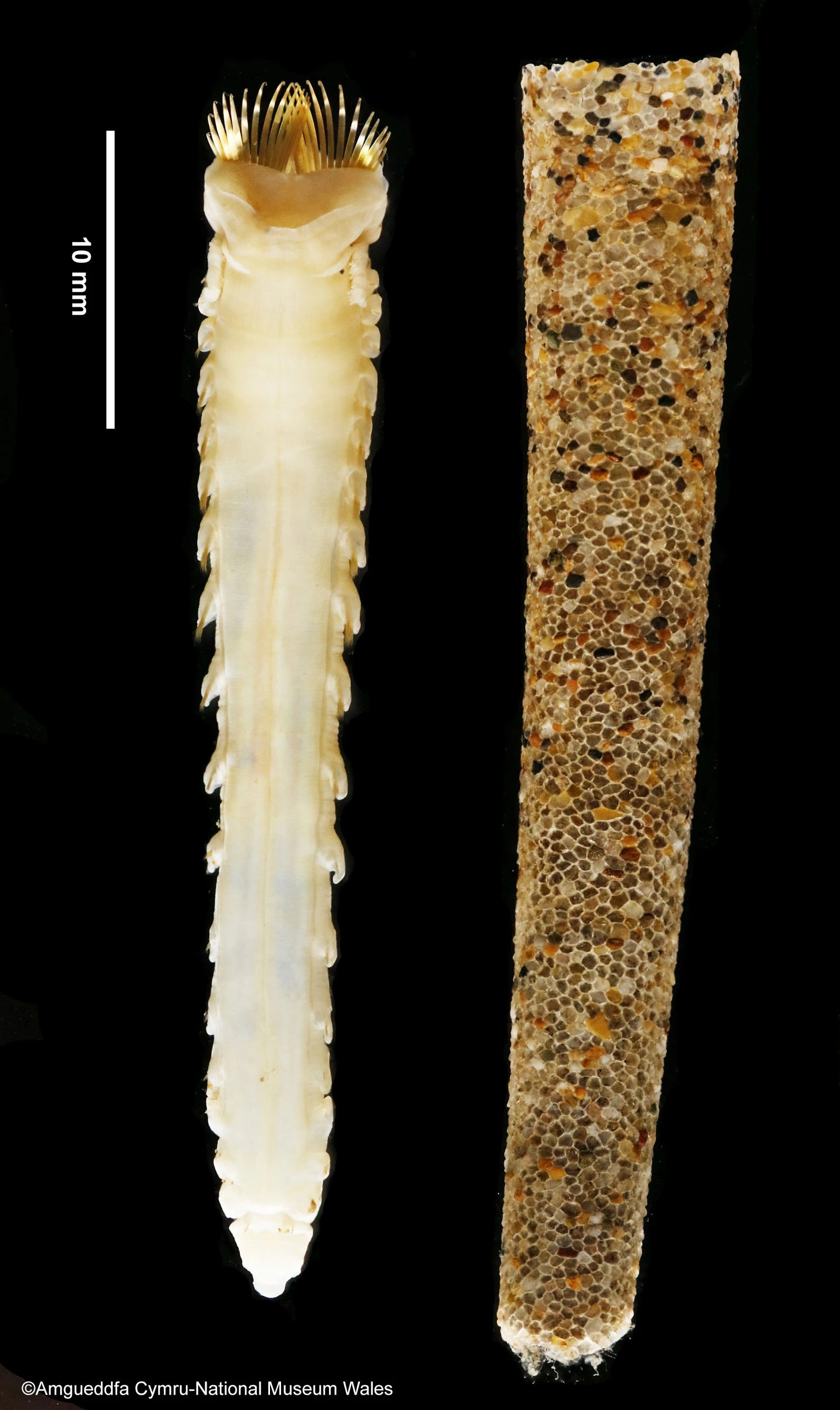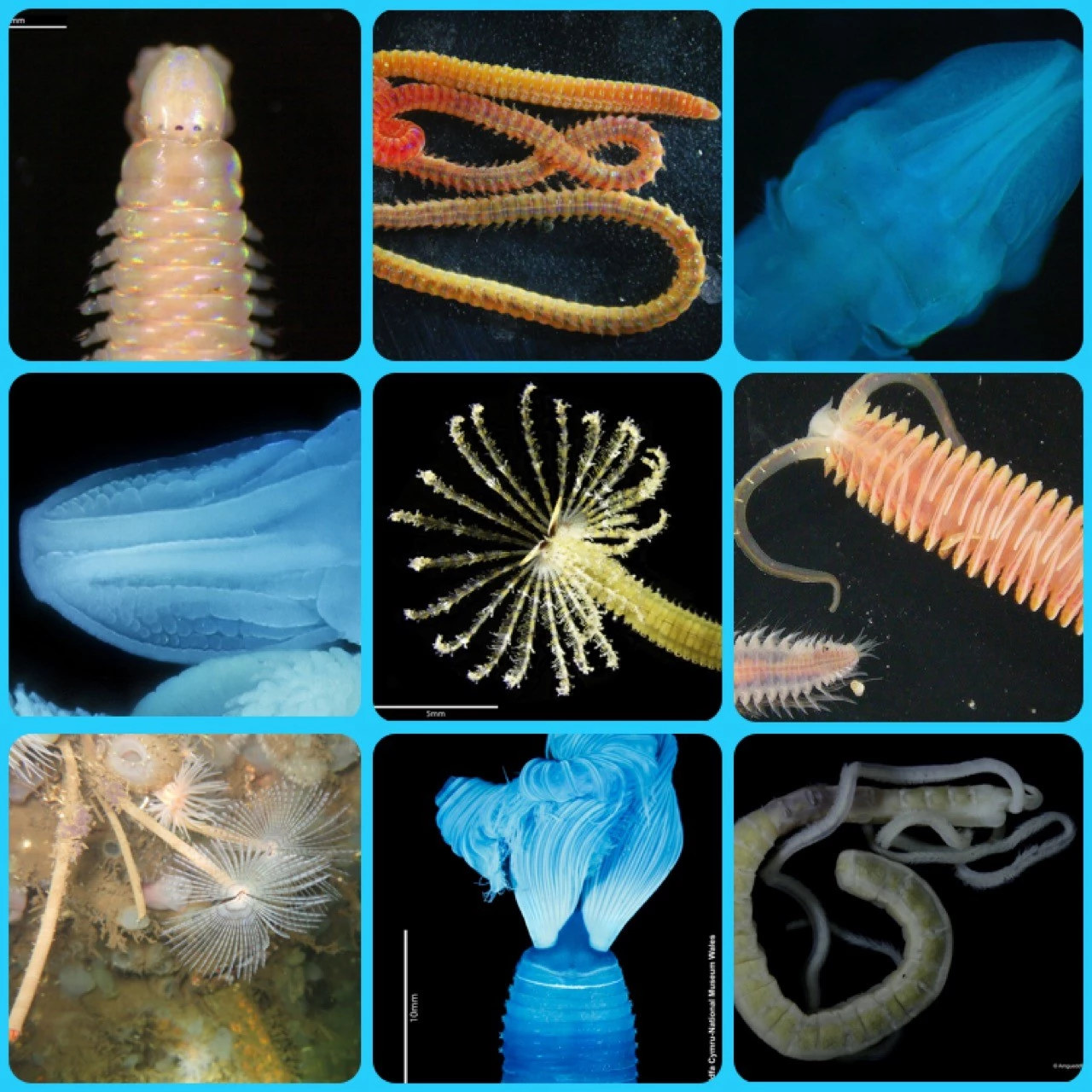A can of worms – what are marine bristleworms and why are they so important?
The two species of lugworm, Arenicola marina and Arenicola defodiens that we find around the UK.
King Ragworm, Alitta virens often used by fisherman as bait!
Can you see the beautiful colourful bristles along the edges of this Sea Mouse, Aphrodita aculeata? You can see the body is made up of lots of segments, which show that it is a worm.
Strawberry Spaghetti Worm, Eupolymnia nebulosa which occurs commonly around the UK gets its name from its red body with white spots. Can you see the bright red gills?
The Ice-cream Cone Worm, Lagis koreni, builds an intricate tube made of sand and pieces of shell. They live upside down and use the beautiful gold bristles to dig in the sand.
Montage of some of the amazing bristle worms that we find around the world.
- Think you know worms? These might surprise you. Marine worms can be beautiful, ferocious, wondrous and spectacular
- Marine worms are vitally important for the health of our oceans, they play important roles in food webs, and are the ‘gardeners of the oceans’
- Amgueddfa Cymru has two experts in sea worms, discovering new species both at home and abroad
You might never have heard of marine bristleworms, but they are amazingly important and often surprisingly beautiful creatures. That’s what we as museum curators think, and hopefully you will agree after reading this article!
Amgueddfa Cymru – Museum Wales has a vast collection of marine invertebrates, animals that live in the sea, and which, unlike you and me, don’t have a backbone. Most come from waters around Wales, but some were collected from all around the world. They include the sea creatures you may be more familiar with, such as lobsters, crabs, starfish, clams, mussels, corals and anemones, but also contain many more that you may not have heard of.
What are bristleworms?
One such group is the sea worms, or more specifically marine bristleworms. The scientific name for marine bristleworms is polychaetes, a name which translates to “many bristles”, as they have many hair-like bristles along their bodies for movement or attachment. They are related to earthworms and leeches, in a group called ‘Annelida’, the segmented worms. If you have ever studied an earthworm closely in your garden, you will have seen the body is made up of many segments, which give the group its name.
Where can I see bristleworms?
Have you ever seen the squiggles of sand across the surface of the beach and wondered what made these strange sandy ‘casts’? Well, they are made by lugworms, a common type of marine bristleworm often used by fishermen to catch fish. The lugworms live beneath the surface of the sand in burrows, munching on the sand to gain nutrients. They then need to get rid of the sand, which they release from their tails, almost like a tube of toothpaste. So, what you are seeing is actually the waste products from the worm – yes, worm poo!
Another type of marine bristleworm that you may have heard of are ragworms, also used by fisherman as bait. The King Ragworm, Alitta virens, can grow up to a metre long, and is a scavenger, often feeding on other animals! But don’t worry, you don’t often see one on the beach.
Why are marine bristleworms important?
Firstly, they often make up a large proportion of the animals that live in the seabed, sometimes as much as 50-80%! This makes them an important part of ocean food webs, providing food for other animals such as crabs, lobsters, fish, sea birds and even other types of worms. Without them, whole food webs would collapse. Secondly, they are the ‘gardeners of the ocean’, doing a similar job to earthworms on land. They are constantly turning over the sediments within the seabed, getting oxygen down into them. Scientists often call them good ‘indicator species’, which means that they can often tell us about the health and well-being of the oceans. For example, the presence of some bristleworms tells us that the seabed is healthy, whilst others may indicate the environment is polluted. Other worms can build reef-like structures which can be home to all sorts of other animals.
What do bristleworms look like?
So hopefully we have convinced you of how important marine bristleworms are, but what about convincing you just how pretty they are? Well, there are over 12,000 different species of marine bristleworms across the world, and we are finding new species all the time. We have well over 1,000 species here in the UK, and that number is growing, too. So, what do they look like? Marine bristleworms have adapted to live in almost all marine habitats and environments and so they are really variable in their shape, size and colour. A few are really small, so small in fact that they live between the sand grains on the beach, whilst others are said to reach over 4 metres in length! Some can look very similar to earthworms but many look very different, and a few don’t even look like worms at all. Some are brightly coloured, looking almost like flowers, others are almost iridescent and shiny, and some even look a little scary! So, let’s tell you about several fascinating worms……
The so-called Sea Mouse, Aphrodite aciculata, looks furry but it is actually a worm. They live all around the UK and you can sometimes see them washed up on the beach. Turn one upside down and you can see the segments which tell you that is the case. It is a predator, often eating other worms. However, look at those beautiful and colourful bristles along its body!
The Strawberry Spaghetti Worm, Eupolymnia nebulosa, gets its name from its strawberry red body with white spots, and the mass of spaghetti-like tentacles on its head used to capture its food. Despite its name, we are not sure it would go well with cream! You can find them hiding underneath rocks on the beach, all around the UK.
Speaking of food, how about an Ice-cream Cone Worm, Lagis koreni. These beautiful worms build intricate cone shaped tubes out of sand grains and small fragments of shells. The worms live upside down, digging in the sand using golden bristles, which look a little like eyelashes! You may come across an empty tube on UK beaches.
Why do museums have collections of marine bristleworms?
So, hopefully we have convinced you that worms can be wonderous creatures but why do museums have collections of them? These collections provide an amazing snapshot of which species have lived in different places at different times. This is important so that we can map any changes that might occur due to things like climate change.
Are new species of bristle worm still being found?
Amgueddfa Cymru has two specialists in marine bristleworms who study these amazing animals. They are taxonomists, scientists who find, describe and name new species and inform others across the world what to look out for. Museum collections are an extremely important resource for this type of research, helping us to learn more about biodiversity on Earth and record and investigate changes to it. You can find out more about the museum’s work on describing species here and keep an eye out on the museum’s blog pages for updates.
